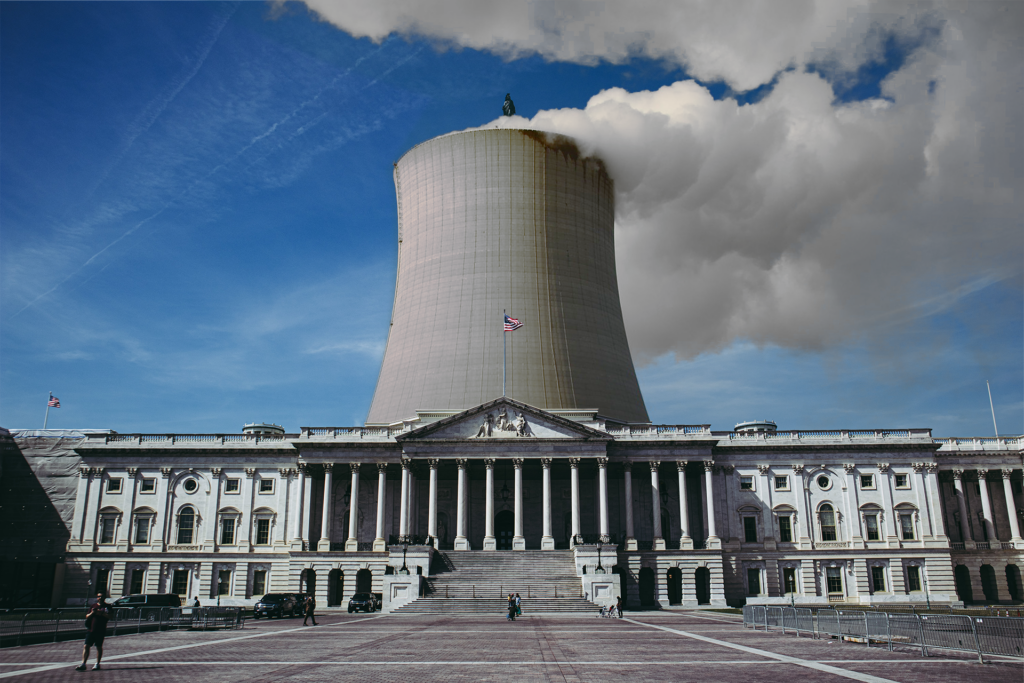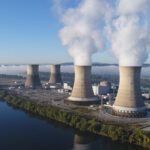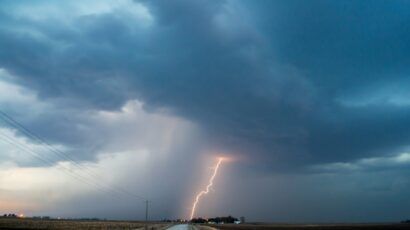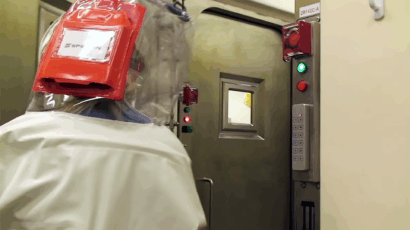Senate extends nuclear liability-limiting law without public scrutiny. Here’s why we should care.
By Victor Gilinsky | August 22, 2023
 The 2024 National Defense Authorization Act including a 20-year extension of the Price-Anderson Act passed the US Senate on July 27, 2023 without prior public hearing. It has yet to pass the House. (Image design by François Diaz-Maurin)
The 2024 National Defense Authorization Act including a 20-year extension of the Price-Anderson Act passed the US Senate on July 27, 2023 without prior public hearing. It has yet to pass the House. (Image design by François Diaz-Maurin)
On the night of July 27, the US Senate passed the National Defense Authorization Act for fiscal year 2024. The Senate-approved bill included a 20-year extension of the Price-Anderson Nuclear Industries Indemnity Act, which provides that if there are any offsite lives and property lost in a severe reactor accident, nuclear industry manufacturers and builders cannot be held liable. The extension of the act also includes another controversial provision—the adequacy of funds provided by the act for compensating victims of a nuclear accident.
The approval last month of this extension came without any public hearings and was introduced in Congress in a rather troubling manner. The extension’s backers, knowing it would face rough sledding in an open hearing, first attached it to the Accelerating Deployment of Versatile, Advanced Nuclear for Clean Energy (ADVANCE) Act of 2023, which was then placed on the Senate legislative calendar on July 10 and added to the “must-pass” National Defense Authorization Act. While it has yet to pass the House, the act bears powerfully on the country’s commitment to nuclear energy, and especially on safety standards for nuclear power plants and therefore should not escape public scrutiny.
The Price-Anderson Act was first approved in 1957, soon after the Atomic Energy Act of 1954 permitted private nuclear energy activity. Firms like General Electric and Westinghouse, among others, told Congress they would not build commercial nuclear power plants—a technology with which there was essentially no experience—if they faced vast liability for possible accidents. To promote rapid investment in nuclear power plants, the government gave the builders and vendors freedom from liability for offsite accidents. It added provisions for public compensation after a catastrophic accident. But both provisions need updating in view of what we have learned in the last 60-odd years.
The act currently provides about $13 billion for post-accident public compensation, with the funds coming over time from a self-insurance scheme funded by the owners of nuclear power plants. But the estimated cost of the 2011 Fukushima accident—several hundred billion dollars—dwarfs the Price-Anderson amount. Yet, there is more. If an accident was to lead to widespread and long-term nuclear plant shutdowns, as occurred in Japan, it isn’t clear the owners would be able to meet their financial obligations. What’s clear is that after a severe nuclear accident, the issue of compensation would land in the lap of Congress.
At a 2014 Nuclear Regulatory Commission hearing on a safety upgrade for the 19 US plants essentially identical to the ones at Fukushima, the staff of the US Nuclear Regulatory Commission (NRC) told the commissioners that a fire in only one of the pools in which nuclear plants store highly radioactive used fuel could release much more radioactivity, conceivably 20 times more, than in the 2011 Fukushima accident. The commissioners at the time dismissed the concern on grounds that such an event was so improbable it failed the NRC’s cost-benefit analysis. But, however remote, the possibility remains.
The chief problem with the Price-Anderson Act is the difference in how the law affects the public and the nuclear firms. In view of federal preemption of nuclear licensing, the public has essentially no say in the siting of a nuclear power plant and so must accept the associated accident risk. Nuclear vendors, however, are freed from all liability for offsite consequences of a nuclear accident, and so have nothing to worry about, either financially or legally.
According to the NRC, calculations using “probabilistic risk assessment” serve as proof that the probability of severe nuclear accidents at US nuclear plants is extremely remote. But large nuclear vendors like General Electric and Westinghouse evidently don’t believe these numbers; otherwise, they would accept liability and would not fear risking their stockholders’ investment. If reactor builders won’t accept paying for the consequences of a possible nuclear accident, why then should members of the public, whose health and communities would be affected?
The public shouldn’t and wouldn’t have to accept such risk if the NRC required that a nuclear containment building—the concrete and steel structure surrounding the reactor vessel, its steam generators, and its piping—be able to demonstrate it can prevent radioactive materials from reaching the public in the worst-possible accident, one in which the tens of tons of uranium fuel core would melt. (The ultimate problem with the Fukushima reactors was their weak containments.) Reactor builders should also demonstrate this not by probabilistic calculations but by physical mechanisms. Such “total protection” was, in fact, the original purpose of reactor containment. A 1962 licensing guide of the Atomic Energy Commission (AEC) for proposed nuclear plants included the following information to be submitted (my emphasis): “A description of design features provided to prevent or capable of preventing penetration of the containment system by the worst credible core melt-down.”
In the mid-1960s, the NRC brushed off warnings from its safety experts to limit the power level of reactors because containments could not guarantee such total protection. (A severe accident dumps an amount of energy into the containment which is proportional to the reactor’s power level.) Instead, for purposes of licensing large reactors, the commission, led by then-Chairman Glenn Seaborg, abandoned altogether the protective role of containment in accidents proceeding to melting of fuel. To cope with accidents, the AEC switched to a full reliance on emergency cooling and ruled that severe accidents—leading to melting of fuel—were “not credible.” This head-in-the-sand approach led to the 1979 Three Mile Island accident in which most of the uranium fuel inside the reactor melted.
A return to stricter requirements on containment design would fit with the current interest in smaller reactors, which operate at lower power levels. Unfortunately, the US nuclear industry and the Energy Department are moving in the opposite direction: They argue in unison that the putative safety advantages of smaller nuclear plants should lead to even lower containment requirements and, they hope, cheaper plants. But this argument amounts to prioritizing remote nuclear vendors’ shareholders over citizens in the surrounding area. Lost is the notion of continual improvement in nuclear reactor safety.
The current exuberance over “advanced” reactors” has some of the same boosterish markings as the earlier AEC episode, with the advocates so sure they are right that they think cutting corners is okay—like dispensing with public hearings on Price-Anderson Act extension.
The Price-Anderson Act extension is part of a larger program that would pull out the stops on granting generous subsidies to private nuclear firms, speeding approvals of nuclear license applications and promoting nuclear reactor exports—all supposedly in the interest of “reestablishing America’s preeminence as the global leader in nuclear energy in the 21st century.”
We need to stop and think as a society before it’s too late. Rather than a hastily and quietly passed 20-year extension, we need first a thorough public examination of the Price-Anderson Act’s fundamental provisions and their effect on nuclear reactor safety and licensing standards.
Together, we make the world safer.
The Bulletin elevates expert voices above the noise. But as an independent nonprofit organization, our operations depend on the support of readers like you. Help us continue to deliver quality journalism that holds leaders accountable. Your support of our work at any level is important. In return, we promise our coverage will be understandable, influential, vigilant, solution-oriented, and fair-minded. Together we can make a difference.
















In point of fact, the TMI containment worked.
Fukushima’s problems were the direct result of loss of power preventing cooling the core. The melted core melted through part of the containment.
I do agree that a containment is a prudent defense-depth measure for advanced reactors.
If you have to intentionally vent radioactive steam into the surrounding neighborhoods, to avoid a hydrogen explosion in the reactor containment vessel, then can you really say “containment” worked?
Quite.
TMI’s containment did not work. TMI’s containment had a slight positive pressure before the partial meltdown and did not afterwards.
Strange, indeed. I thought the leaks would have been common knowledge by now.
I believe the word you were looking for is “leaked” as in:
” – the TMI containment leaked.
Fukushima, in fact, leaked before the containment was breached by the melt-down, not just The bolts in the pressure vessel in fact stretched and allowed gases to escape, and for some time before the breach, those gases were vented without warning into the open atmosphere. Escaping citizens of Futaba, passed through the highly-radioactive plumes and died – apparently – from the emotional trauma (LOL).
https://simplyinfo.org/2019/12/first-photos-of-fukushima-unit-1-containment-cap/
This is, I recall, pretty-much what was postulated by the much-maligned Arnie Gundersen.
If they concentrated there resources on the development of Fusion energy, it would answer our prayers for future energy needs.
I like our current fusion reactor, 93,000,000 miles away. Unlike the billions extorted from taxpayers spent on current research, it is free. It is perpetually working, unlike the proposed fusion reactors that are perpetually 30 years in the future.
Superbly well-reasoned argument. Needs no corrections or refinement. Just action.